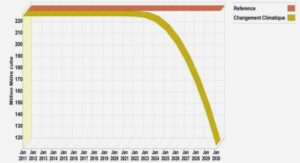For the purposes of this paper, ‘second language learning’ refers to the deliberate learning of second and subsequent languages after the initial subconscious acquisition of one’s first language (or languages in the case of bilinguals/multilinguals). The distinction is important because the learning mechanisms are very different, especially in the case of adults, who have passed the critical period for natural language acquisition. First language acquisition happens subconsciously over several years as the child matures, and is characterized by large amounts of comprehensible input, child-directed speech, and the leisure to listen for an extended period of time before being expected to speak. By contrast, adults learning a second language may have limited time to devote to the task, limited amounts of the L2 to listen to, cultural barriers to overcome, while at the same time having an urgent need to use the language right away. However, they do have several advantages: they are already able to speak one language, are cognitively mature, and may have a strong motivation to succeed.
A general observation in second language learning is that some learners are more successful than others because of factors such as age, intelligence, motivation and personality (Lightbown & Spada, 2006). Given the multiple commonalities between music and language presented above, as well as the beneficial role of music in first language acquisition, it is plausible that prior musical experience may be another important factor that positively impacts learners’ success. Researchers have approached the study of this hypothesis by examining the effects of various musical factors on L2 learning: 1) musical aptitude, 2) musical expertise (various kinds of training), 3) musical presentation during instruction and 4) extra-linguistic effects such as mood regulation and connection to the learner’s culture.
Musical Aptitude
Musical aptitude refers to the potential to succeed as a musician, and is unique to each person, regardless of their experience and training in music (Schellenberg & Weiss, 2013). In a review of music and cognitive skills, Schellenberg and Weiss (2013) state that musical aptitude may be a surrogate measure for general intelligence and may facilitate foreign language learning skills. However, they caution that commonly-used musical aptitude tests vary in their specific elements studied, thus making findings from different tests difficult to compare. Moreover, they underscore the fact that the link between musical aptitude and L2 success is not causal; it may be simply that high-functioning individuals perform well on musical aptitude tests as well as tests of other cognitive abilities. Gilleece explored this question and determined that there was a “significant relationship between music and language aptitude, independent of general intelligence” (Gilleece, 2006, p. ii). Other studies have shown musical aptitude to be associated with the retrieval of novel word sequences (Simmons, 2011) and improved foreign language pronunciation in children (Milovanov, Huotilainen, Valimaki, Esquef, & Tervaniemi, 2008) and in adults (Borland, 2015; Milovanov et al., 2010).
Musical Expertise.
The term musical expertise has not been consistently defined in the research literature but usually refers to those who have had many years of classical training (J. Chobert, personal communication, April 15, 2014). For the purposes of this study, musical expertise refers to perceptive and productive musical ability gained through either formal study or extensive informal practice.
Musical expertise appears to affect second language learning in several ways. For instance, one study (Slevc & Miyake, 2006) tested the hypothesis that musical ability may account for variances in L2 proficiency among adult learners in four domains: receptive phonological knowledge, productive phonological knowledge, syntax and lexical knowledge. To this end, they recruited 50 Japanese immigrants to the US and collected information on the participants’ musical expertise as well as age, length of residence, L2 use, motivation, non-verbal intelligence, and phonological short term memory. Their results showed that after controlling for other variables, musical ability accounted for L2 productive and receptive phonological knowledge, but not syntax or lexical knowledge.
Another study (Posedel, Emery, Souza, & Fountain, 2012) expanded on Slevc and Miyake’s (2006) work by exploring the relationship between musical training, pitch perception, working memory and L2 productive phonology, and extended this to English speaking students learning Spanish. They found that music training was linked to improvements in working memory and pitch perception, and that pitch perception was linked to better Spanish pronunciation. Other studies have found that trained musicians were better than non-musicians at perceiving lexical stress in a foreign language (Kolinsky et al., 2009) at understanding speech in noisy conditions (Federman, 2011), and at segmenting speech sounds (François, Chobert, Besson, & Schön, 2013). Based on the main findings of these studies, Chobert and Besson (2013) have recently put forward the conclusion that, overall, musicians have better auditory discrimination based on pitch and rhythmic cues, which facilitates the perception of segmental and supra-segmental differences in a foreign language.
Musical Presentation
In the present context, musical presentation refers to musical activities that are used directly as part of the L2 teaching process, including listening, singing, rhythmic training and related exercises. For example, activities such as songs, when used as authentic texts to present foreign language concepts, have been found to have a positive effect on many aspects of L2 learning, including vocabulary (Alipour, Gorjian, & Zafari, 2012; Medina, 2003; Mori, 2011; Rukholm, 2011), pronunciation (Cornaz, Henrich, & Vallée, 2010; Morgan, 2012; Posedel et al., 2012; Terrell, 2012; Zedda, 2005) and grammar (Ayotte, 2004; Cruz-Cruz, 2006; Ludke et al., 2013). Moreover, songs offer a didactic two-for-one: linguistic benefits plus a window onto the culture of the language being taught, which is an essential of second language learning.
Another bonus of musical presentation in L2 instruction is the tendency for songs to get ‘stuck in our heads’, also known as Involuntary Mental Rehearsal, which provides a convenient form of comprehensible input (Krashen, 1983; Salcedo, 2002)). This phenomenon has been greatly exploited by sports teams, political campaigns and the advertising industry, and can be used to advantage by language-learners as well, as it results in increased practice without the pressure or boredom sometimes felt in a classroom setting. This ‘song stuck in my head syndrome’ (Murphey, 1990b) has even been shown to enhance both receptive and productive vocabulary in the L2 (Salcedo, 2002).
Taken together, these studies show that the efficiency of L2 learning can be affected by the musical aptitude of L2 learners, their previous musical experience and a musical presentation of linguistic concepts.
1. Introduction |





